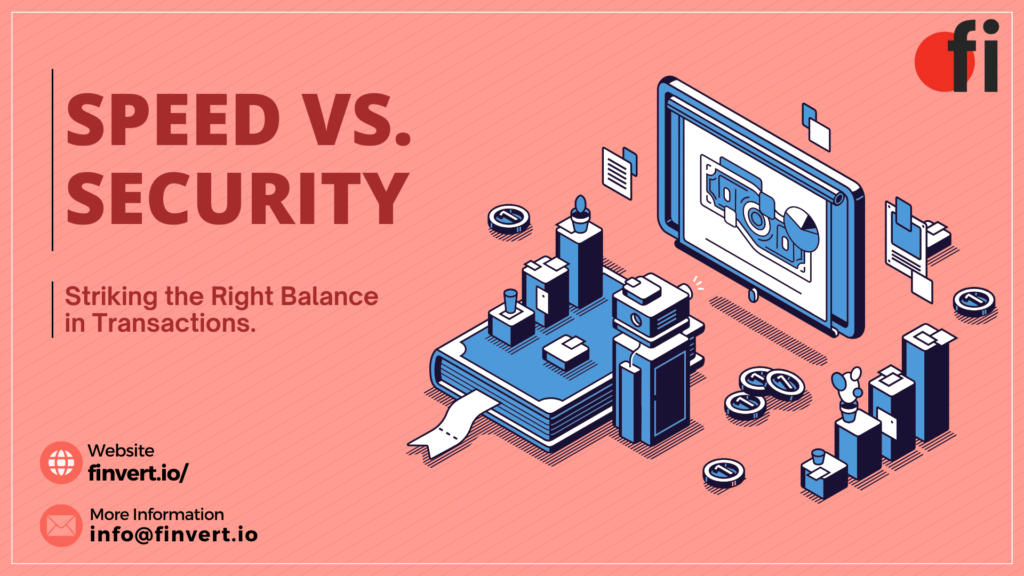In the fast-paced world of financial transactions, a delicate balance exists between speed and security. While consumers and businesses alike demand instant, frictionless transactions, the importance of robust security measures cannot be overstated. As technology continues to advance and threats evolve, finding the optimal equilibrium between speed and security becomes increasingly crucial. Let’s explore how striking the right balance in transactions is essential for ensuring both efficiency and protection in the digital age.
1. The Need for Speed
In today’s digital economy, speed is of the essence. Consumers expect transactions to be processed swiftly, whether they’re making purchases online, transferring funds between accounts, or conducting peer-to-peer payments. Speedy transactions enhance convenience, improve customer satisfaction, and enable businesses to operate more efficiently. Moreover, in industries such as retail and e-commerce, the ability to provide seamless, rapid payment experiences can be a competitive differentiator, driving customer loyalty and repeat business.
2. The Imperative of Security
While speed is paramount, it must not come at the expense of security. With cyber threats becoming increasingly sophisticated, safeguarding sensitive financial information and preventing fraud are top priorities for businesses and consumers alike. Data breaches, identity theft, and payment fraud can have devastating consequences, eroding trust, damaging reputations, and incurring significant financial losses. Robust security measures, including encryption, multi-factor authentication, and fraud detection algorithms, are essential for protecting against these risks and ensuring the integrity of transactions.
3. Finding the Right Balance
Striking the right balance between speed and security requires a holistic approach that takes into account the specific needs and risk profiles of both consumers and businesses. It involves leveraging technology to streamline transaction processes without compromising on security measures. For example, real-time fraud detection algorithms can identify and flag suspicious transactions instantly, allowing legitimate transactions to proceed smoothly while mitigating the risk of fraudulent activity.
4. Embracing Technological Innovation
Technological innovation plays a pivotal role in enabling the harmonization of speed and security in transactions. Advancements in areas such as artificial intelligence, machine learning, and blockchain technology offer opportunities to enhance both the speed and security of transactions simultaneously. For instance, blockchain technology, with its decentralized and immutable ledger, provides a secure and transparent platform for conducting transactions while reducing the time and cost associated with traditional intermediaries.
5. Educating and Empowering Users
Education and awareness are key components of achieving the right balance between speed and security in transactions. Both consumers and businesses must be educated about the risks associated with fast-paced transactions and the importance of implementing robust security measures. Empowering users with knowledge about best practices for securely conducting transactions online can help mitigate the risk of falling victim to fraud or cyber-attacks.
6. Continuous Monitoring and Adaptation
Maintaining the balance between speed and security is an ongoing process that requires continuous monitoring and adaptation. As new threats emerge and technology evolves, businesses must remain vigilant and proactive in implementing and updating security measures. Regular assessments of transaction processes, risk assessments, and vulnerability scans are essential for identifying and addressing potential weaknesses in security protocols.
Conclusion: Achieving Harmony in Transactions
In the ever-evolving landscape of financial transactions, achieving harmony between speed and security is paramount. By finding the right balance, businesses can deliver seamless, efficient transaction experiences without compromising on the safety and integrity of sensitive financial data. Through technological innovation, education, and continuous monitoring, businesses can navigate the complexities of the digital economy with confidence, ensuring that speed and security coexist harmoniously to meet the needs of consumers and businesses alike.

